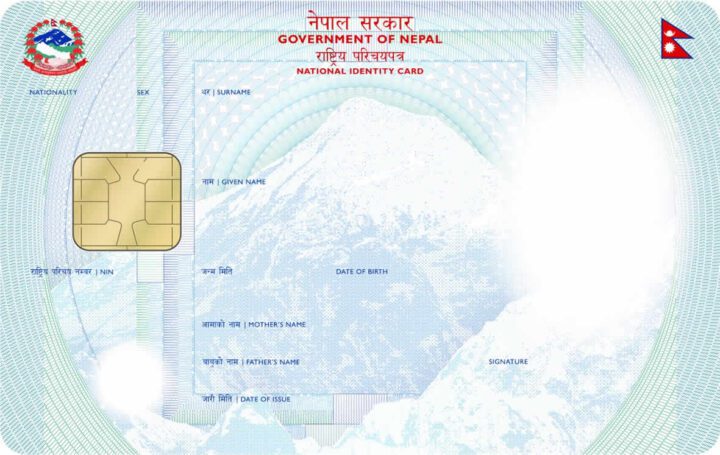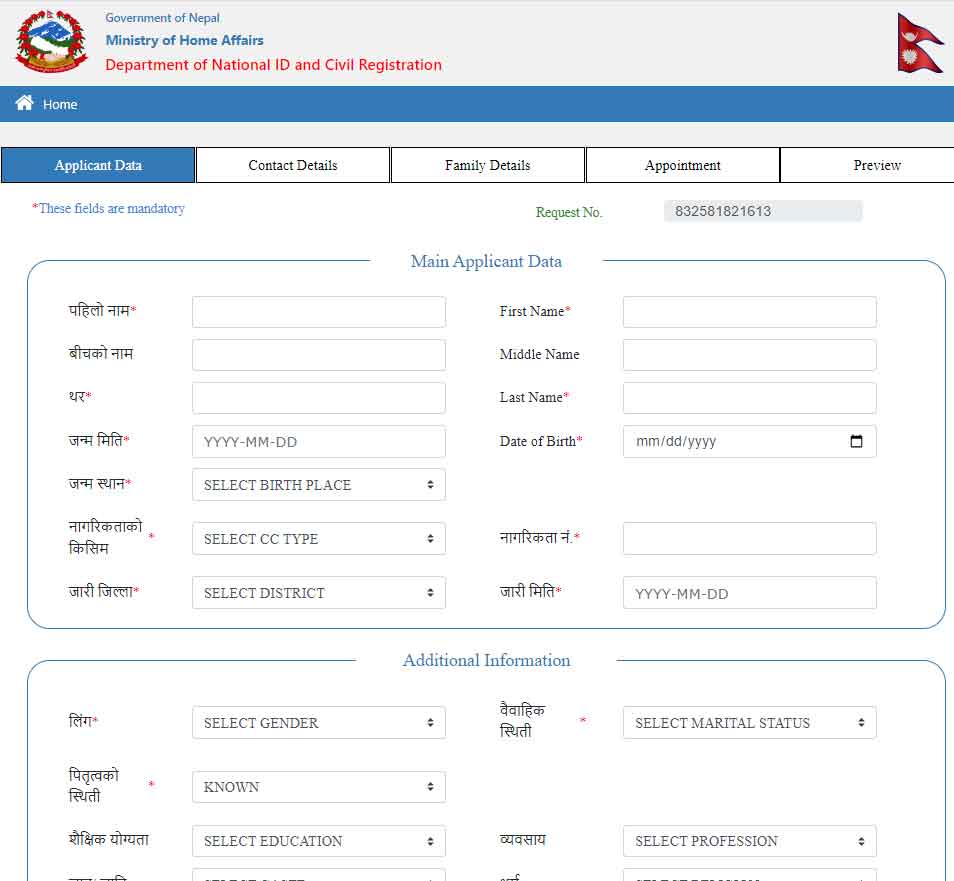
Introduction
In an increasingly digital world, the need for a robust and reliable system of identification is paramount. Nepal’s answer to this necessity is the Rastriya Parichaya Patra (RPP), or National Identity Card. This initiative aims to streamline identity verification processes, enhance security, and improve access to various services for Nepalese citizens. This blog will delve into the significance, features, benefits, and challenges of the Rashtriya Parichaya Patra, as well as its impact on the country’s socio-economic landscape.
The Significance of Rastriya Parichaya Patra
Historical Context
Historically, Nepal has relied on a variety of identification documents such as citizenship certificates, voter ID cards, and passports. These documents, while functional, often presented issues of inconsistency, duplication, and lack of a unified identity management system. The introduction of the RPP marks a significant step towards creating a centralized and standardized identification system.
Government’s Vision
The Nepalese government envisions the RPP as a cornerstone of its digital governance strategy. By providing a single, secure, and universally accepted form of identification, the government aims to improve administrative efficiency, enhance security, and provide citizens with easier access to public and private services.
Features of Rastriya Parichaya Patra
Biometric Authentication
One of the standout features of the RPP is its use of biometric data. This includes fingerprints, facial recognition, and iris scans, ensuring a high level of accuracy and security in identity verification. Biometric authentication reduces the risk of identity theft and fraud, providing a reliable means of confirming an individual’s identity.
Unique Identification Number
Each RPP holder is assigned a unique identification number. This number is linked to the individual’s biometric and demographic data, creating a comprehensive profile that can be used across various government and private sector services. This unique ID simplifies the process of accessing services and reduces the likelihood of duplication.
Integration with Digital Services
The RPP is designed to be integrated with a range of digital services. This includes online banking, e-governance platforms, healthcare services, and more. The card’s compatibility with digital systems ensures that citizens can easily and securely access essential services with minimal hassle.
Benefits of Rastriya Parichaya Patra
Enhanced Security
The biometric features of the RPP provide a significant boost to security. By ensuring that each card is uniquely tied to an individual’s physical characteristics, the RPP minimizes the risk of identity fraud and unauthorized access to services.
Streamlined Service Delivery
The RPP simplifies the process of service delivery for both the government and private sectors. With a single, standardized form of identification, bureaucratic processes become more efficient, reducing wait times and improving the overall user experience.
Social Inclusion
For many Nepalese citizens, especially those in rural and underserved areas, accessing essential services can be challenging. The RPP aims to bridge this gap by providing a universally accepted form of identification, enabling all citizens to access services such as banking, healthcare, and education more easily.
Economic Benefits
A robust identification system can have significant economic benefits. By reducing fraud and streamlining administrative processes, the RPP can help save costs for both the government and private businesses. Additionally, improved access to services can stimulate economic activity and enhance overall productivity.
Challenges in Implementing Rastriya Parichaya Patra
Technological Infrastructure
Implementing a nationwide biometric identification system requires substantial technological infrastructure. Ensuring that all regions, including remote and rural areas, have access to the necessary technology is a significant challenge. The government must invest in upgrading infrastructure and providing training to personnel involved in the RPP initiative.
Data Privacy and Security
With the collection of extensive biometric and demographic data, ensuring data privacy and security is paramount. The government must establish robust data protection laws and systems to prevent unauthorized access, data breaches, and misuse of personal information. Building public trust in the RPP system is crucial for its success.
Public Awareness and Acceptance
For the RPP to be effective, widespread public awareness and acceptance are essential. The government needs to conduct comprehensive awareness campaigns to educate citizens about the benefits of the RPP, how to obtain it, and how to use it. Overcoming skepticism and resistance to change is vital for smooth implementation.
Case Studies: Success Stories and Lessons Learned
Aadhar Card in India
The Aadhar card in India serves as an excellent case study for Nepal’s RPP. Introduced in 2009, the Aadhar system has successfully enrolled over 1.3 billion citizens, providing them with a unique identification number linked to their biometric and demographic data. The Aadhar card has significantly improved service delivery, reduced fraud, and enhanced social inclusion in India. Nepal can learn from India’s experience to address potential challenges and optimize the implementation of the RPP.
Estonia’s Digital Identity System
Estonia’s digital identity system is another example worth examining. Estonia has been a pioneer in e-governance, offering its citizens a comprehensive digital identity card that provides access to a wide range of services. The system’s success lies in its robust technological infrastructure, strong data protection measures, and high public trust. Nepal can draw valuable insights from Estonia’s approach to build a secure and efficient RPP system.
Future Prospects of Rastriya Parichaya Patra
Integration with Emerging Technologies
The future of the RPP lies in its integration with emerging technologies. Blockchain, for instance, can enhance data security and transparency. Artificial intelligence can improve identity verification processes and service delivery. By embracing these technologies, Nepal can create a cutting-edge identity management system that sets a benchmark for other nations.

Expansion of Services
As the RPP system matures, there is potential to expand its scope. The card can be used for a variety of purposes, such as digital voting, travel documents, and social security benefits. Expanding the range of services linked to the RPP can further enhance its value and utility for citizens.
Strengthening Regional Cooperation
Nepal can also explore regional cooperation to enhance the effectiveness of the RPP. Collaborating with neighboring countries on best practices, technological advancements, and data security measures can create a robust identity management ecosystem in the region.
Conclusion
The Rastriya Parichaya Patra represents a significant leap forward for Nepal in terms of identity management and digital governance. By providing a secure, reliable, and universally accepted form of identification, the RPP has the potential to transform service delivery, enhance security, and promote social inclusion. However, successful implementation requires addressing technological, privacy, and awareness challenges. By learning from global best practices and embracing emerging technologies, Nepal can ensure that the RPP initiative achieves its full potential, benefiting citizens and the nation as a whole.
The journey towards a fully integrated and efficient national identity system is complex and challenging, but the rewards are immense. With the Rastriya Parichaya Patra, Nepal is poised to create a more inclusive, secure, and prosperous future for all its citizens.
